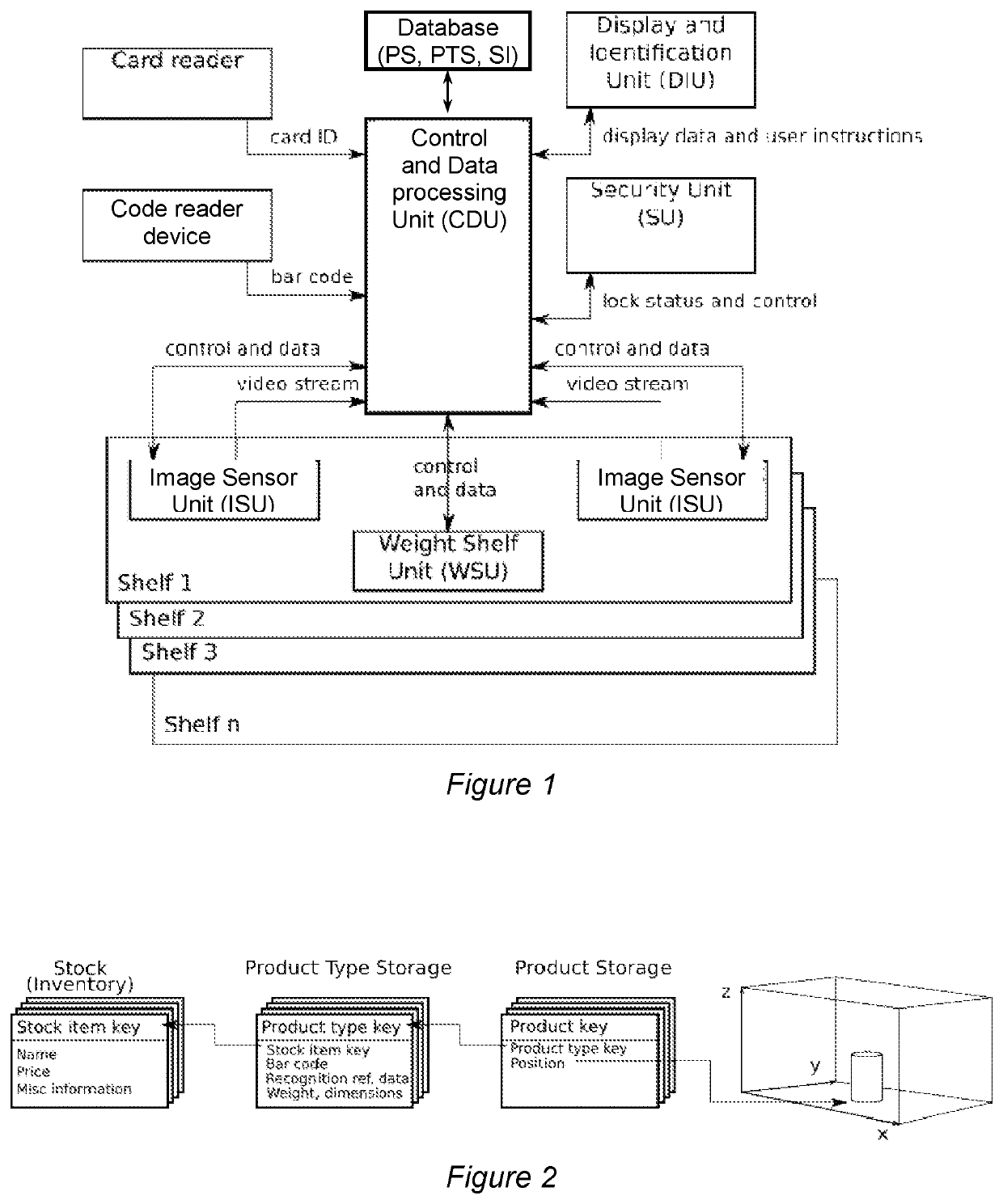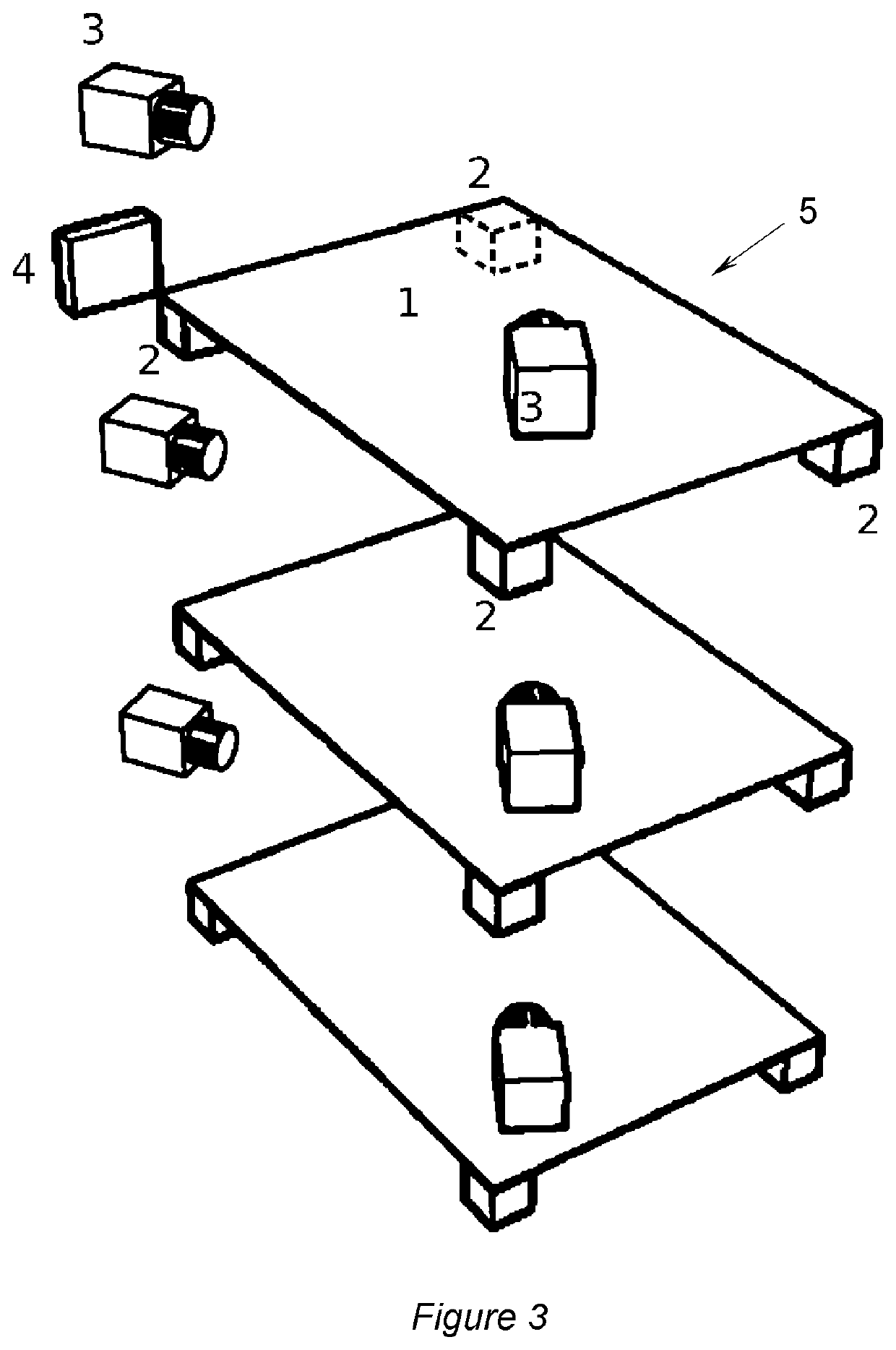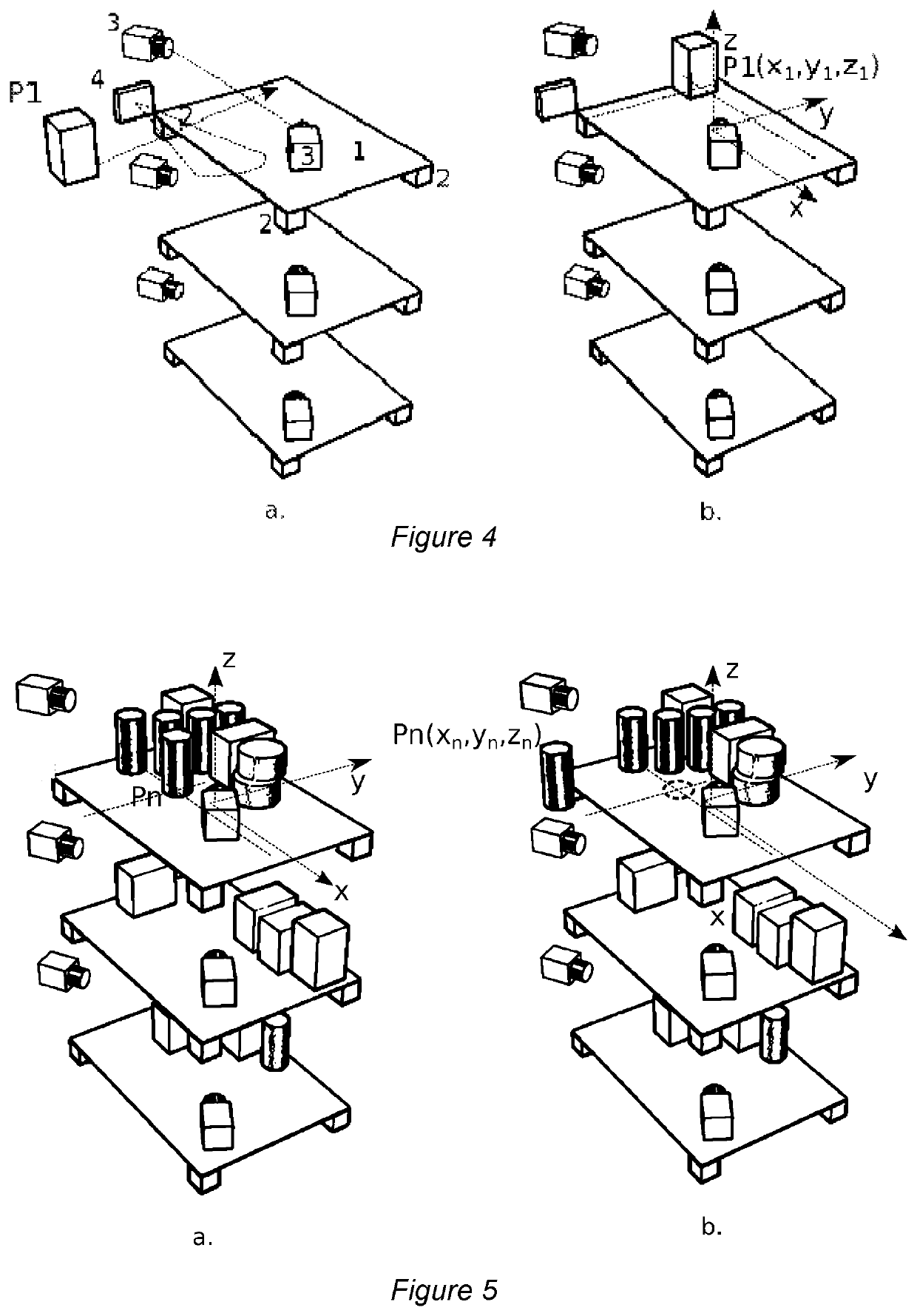Automatic product identification in inventories based on multimodal sensor operation
a multi-modal sensor and product identification technology, applied in the direction of instruments, data processing applications, electromagnetic radiation sensing, etc., can solve the problems of increasing power consumption, error probability, power consumption, and power consumption of extractor mechanisms, and inefficient utilization of storage space in automated vending machines
- Summary
- Abstract
- Description
- Claims
- Application Information
AI Technical Summary
Benefits of technology
Problems solved by technology
Method used
Image
Examples
Embodiment Construction
[0049]FIG. 1 shows schematically the block diagram of an automated supervisor system, its components and connections, as well as the information flow in said system. The system comprises:[0050]a Control and Data processing Unit (CDU) which functions as the central data processor and control unit of the system. It collects various pieces of information from the additional units and manages all the protocols, including but not limited to a payment protocol, a user verification protocol, etc.[0051]a Weight Shelf Unit (WSU) for each and every storage facility, in particular shelves, of the automated supervisor system, said WSU is connected with four weight measurement sensors that are fitted under the corners of the respective storage facility and configured to process the data of said weight measurement sensors. Upon entry of a product item into a storage facility, the WSU reads the weight change information and the total weight, then sends these data to the CDU. In return, the WSU rec...
PUM
 Login to View More
Login to View More Abstract
Description
Claims
Application Information
 Login to View More
Login to View More - R&D
- Intellectual Property
- Life Sciences
- Materials
- Tech Scout
- Unparalleled Data Quality
- Higher Quality Content
- 60% Fewer Hallucinations
Browse by: Latest US Patents, China's latest patents, Technical Efficacy Thesaurus, Application Domain, Technology Topic, Popular Technical Reports.
© 2025 PatSnap. All rights reserved.Legal|Privacy policy|Modern Slavery Act Transparency Statement|Sitemap|About US| Contact US: help@patsnap.com



